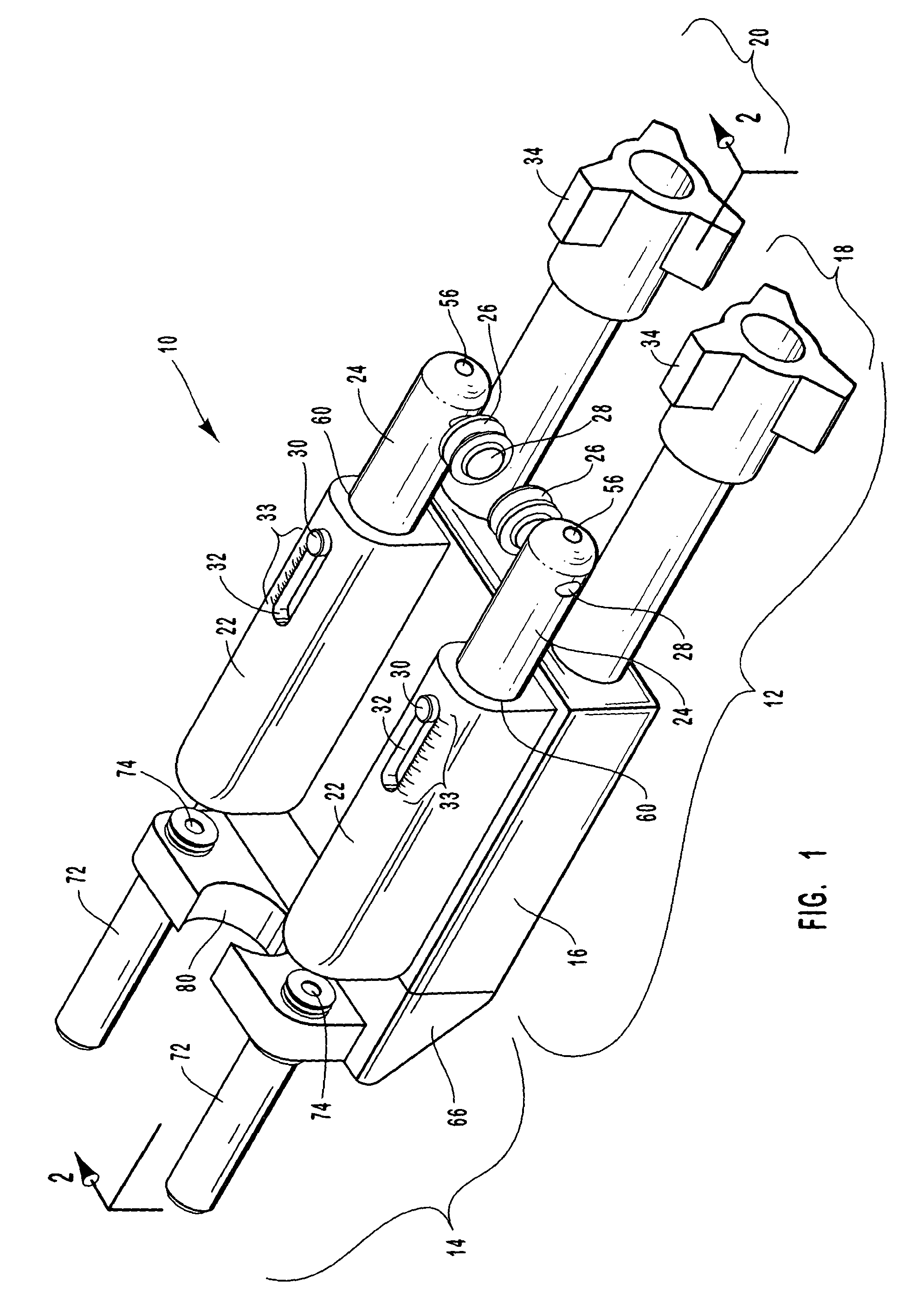Apparatus and methods for independently conditioning and pre-tensioning a plurality of ligament grafts during joint repair surgery
a plurality of ligament grafts, pre-tensioning technology, applied in the field of joint repair surgery, can solve the problems of reducing the actual material stress of the graft over time, affecting the repair effect, so as to improve the adhesion speed, prevent the graft from slipping, and strengthen the fixation of the graft to the bone
- Summary
- Abstract
- Description
- Claims
- Application Information
AI Technical Summary
Benefits of technology
Problems solved by technology
Method used
Image
Examples
Embodiment Construction
[0061]The present invention is directed to apparatus and methods for independently tensioning a plurality of soft tissue grafts (e.g., two) during joint repair procedures, such as in procedures to replace the anterior cruciate ligament (ACL). In order for the soft tissue graft to provide adequate joint stability and provide a predetermined amount of strength, but because of the tendency of many soft tissue grafts (e.g., ham strings) and / or sutures attached thereto to relax after the graft has been implanted, it is often desirable to “condition” the graft prior to being permanently anchored to the bone. Conditioning is advantageously performed to take the play out of the system and to ensure adequate seating of the graft prior to pre-stressing. It may also be desirable to pre-stress (or pre-tension) the soft tissue graft to provide a predetermined amount of joint stability and strength. Thus, conditioning and pre-tensioning of the soft tissue grafts can help to ensure the success of ...
PUM
 Login to View More
Login to View More Abstract
Description
Claims
Application Information
 Login to View More
Login to View More - R&D
- Intellectual Property
- Life Sciences
- Materials
- Tech Scout
- Unparalleled Data Quality
- Higher Quality Content
- 60% Fewer Hallucinations
Browse by: Latest US Patents, China's latest patents, Technical Efficacy Thesaurus, Application Domain, Technology Topic, Popular Technical Reports.
© 2025 PatSnap. All rights reserved.Legal|Privacy policy|Modern Slavery Act Transparency Statement|Sitemap|About US| Contact US: help@patsnap.com



